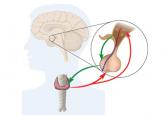Article

Hypothyroidism: Clinical Challenges in Diagnosis and Treatment
- Author:
- Kara-Anne Gregory Curl, MS, MPAS, PA-C
Although accreditation for this CE/CME activity has expired, and the posttest is no longer available, you can still read the full article.
